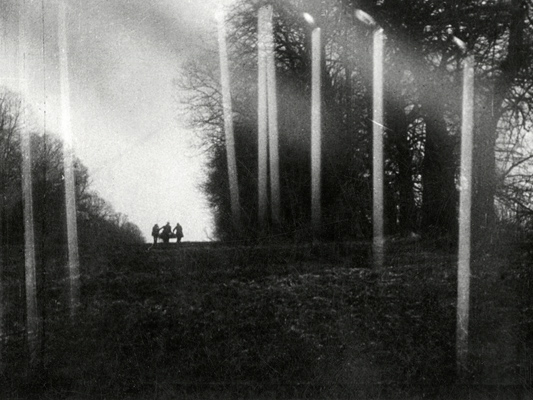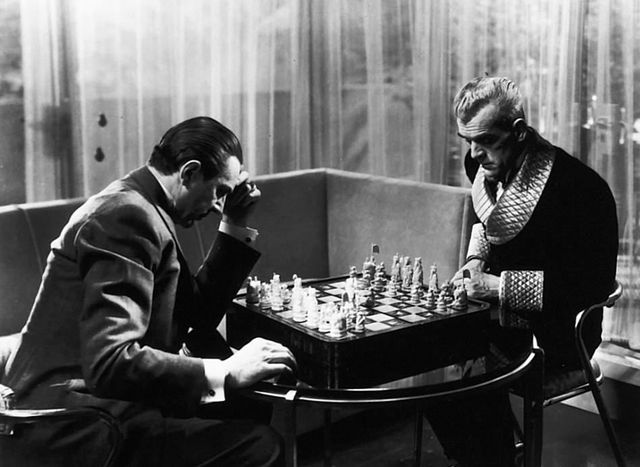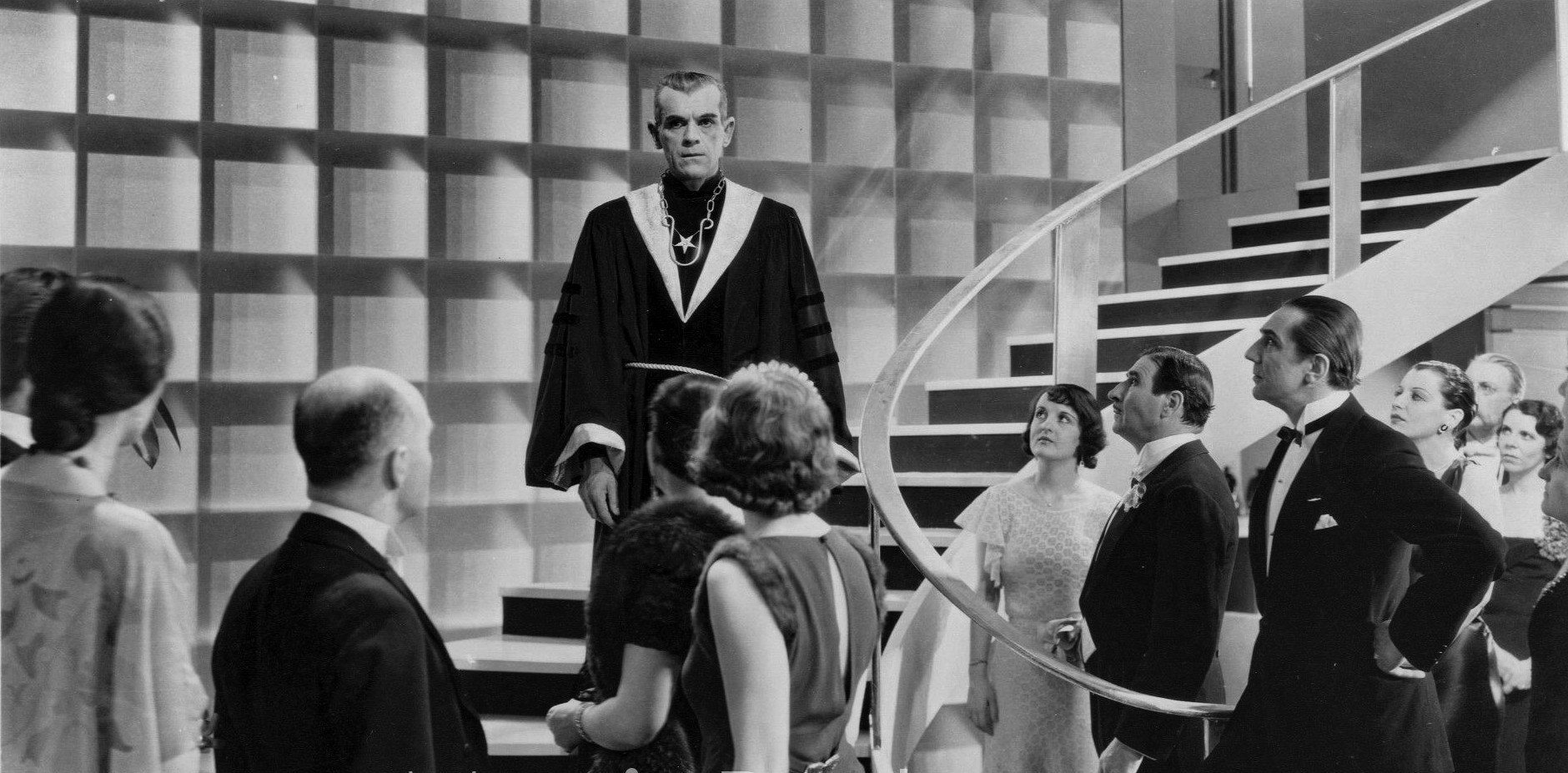
31+ Days of Horror. 33 Horror Movies. 33 Reviews. Hooptober Challenges and Bonus Tasks.
View my 2017 Cinema Shame/Hoop-Tober Watch Pile Shame-a-thon Statement here.
Nature Shame:
Straight-up Shoulda Seen It Shame
Hoop-tober Challenge Checklist:
Decade: 1980’s
#10. Friday the 13th Part 1 (1980)
 Friday the 13th appeared on my Cinema Shame Statement for 2017. I then took it off in favor of Henry: Portrait of a Serial Killer. True to form, I waffled back over to Friday the 13th because I felt that this was the film and the franchise that I’d most inexplicably overlooked.
Friday the 13th appeared on my Cinema Shame Statement for 2017. I then took it off in favor of Henry: Portrait of a Serial Killer. True to form, I waffled back over to Friday the 13th because I felt that this was the film and the franchise that I’d most inexplicably overlooked.
Cultural phenomenon. Horror icon. Omnipresent imagery. Yet I’d never bothered. I even played the old Friday the 13th Nintendo game.
The reasons? I’ll place blame on the desire to discover and watch more hidden gems. The American slasher genre exploded in the 1980’s. What was the fun in watching a movie everyone had already seen when there were hundreds of likeminded films with far lesser followings in need of a champion?
As I consumed mass amounts of horror in my high school years, I found myself drawn particularly to foreign horror. The Italian giallo films, especially. Where was the fun in calling up your friends in 1996 and saying “Guess what I just saw?! It was some little movie called Friday the 13th. Wanna come over and watch?”
This worked with Michele Soavi’s The Church. This worked with Lamberto Bava’s Demons. Peter Jackson’s Meet the Feebles. At the time many these films were not all that available and I used to order legal bootlegs from a company called Revok. (I think I still have my copy of Dellamorte Dellamore with Japanese subs laying around somewhere.)

The cult of the *new* fueled my moviewatching. Truth be told — it still fuels my moviewatching habits. Hence the existence of Cinema Shame in the first place. Without Cinema Shame, I might continue to ignore these films and these franchises that everyone has seen.
And as a result of Friday the 13th‘s cultural omnipresence, I just felt like I’d seen this film a hundred times over in the hacks and imitators that sprung up in its wake. I watched a bunch of movies that were Friday the 13th in everything but name. At least now I’ve watched the “origin of the species” — and now I can talk about the film’s specific influence instead of waving my hand and saying something about all that “Jason stuff.”
This is progress. Thank you, Cinema Shame.

The Story
A bunch of kids go to Camp Crystal Lake to re-start a summer camp despite being warned by the lunatic locals that the damn place is cursed beyond all get out and they’re all going to die a grizzly death.
Just a bunch of kooky local flavor if you ask me. Except every five minutes or so another one of them does die so I guess the locals weren’t so kooky and playfully insane after all.
It’s the most basic of concepts — sexy teens, isolated location, rampaging killer — but it’s incredibly effective.

Despite my admiration for the film’s simplicity, my gut reaction remained “I’ve been here before.” I’ve seen this before. I’ve seen the evolution of this movie throughout the 1980’s and beyond. And I didn’t find Friday the 13th particularly scary. What I did find impressive, however, was film’s bravado when it came to showcasing cinematic bloodletting.
Straight out of the shoot, Friday the 13th executes two of its characters with abrupt and shocking scenes of practical gore. A slit throat. An arrow impalement. The camera unflinchingly frames these deaths front and center.
This is where the film excels. The practical gore effects and unsettling voyeurism. I found it lacking, however, in that the film makes such an effort to strike the horror chord so regularly, and so efficiently, that Friday the 13th feels like a spreadsheet. Every five minutes “the killer” punches his timecard, goes back on the clock, and a character is killed off or put in peril. As a direct result of this focus on horror elements, none of the characters ever really become known. They all remain faceless pawns in the film’s endgame.
I don’t expect a character study, but when relentless scenes of slashing bleed into each other that leaves no room for the characters to breathe and inhabit the screen as anything other than Slash-Test Dummies. We gain a measure of proximity to the “final girl” because she’s merely on-screen the longest.

And in the end Friday the 13th isn’t doing anything wildly new. It’s repackaging a known commodity for a generation of teenagers that had become numb to big screen horrors anesthetized for their entertainment. Halloween updated tropes by bringing terror to suburban teenagers. And while John Carpenter’s film sold legitimate white-knuckle tension and masked most of the overt horror — Friday the 13th upped the ante. Minimal story, maximum horror.
Friday the 13th changed the way gore could be viewed at the mainstream cinema. Gore and practical effects would grow to be considered an art form. Low budget invention and creative workarounds. But it all depended upon your perspective. Back in 1980, Siskel and Ebert clearly disagreed. If nothing else I find this debate interesting. I respect and value their thoughts on the matter. While I think they’re missing the point, there’s plenty to think about here.
For the other side of this argument, the side that argues that there’s poetry in blood geysers, I present Chainsaw and Dave’s elaborate prank from Summer School. Maybe they’re not the best debaters, but they get their point across.
Final Thoughts:
My perspective on this film has been clouded. As a landmark even in film history, Friday the 13th occupies a place on the historical record. The film maintains the power to thrill — and even surprise. (Knowing the ending may have somewhat spoiled it for me.) If I’d seen the film in the 1980’s when it was still considered an elicit thrill, watching something parents had deemed verboten, I do not doubt that I would have been far more receptive to it’s dime-store pageantry of blood.
30Hz Movie Rating:

Nature Shame:
Straight-up Shoulda Seen It Shame
Hoop-tober Challenge Checklist:
Decade: 1980’s
Franchise sequels
#10. Friday the 13th Part 2 (1981)

I watched Part 1 so let’s keep this train rolling right on into Part 2, released just the next year to capitalize on the buzz.
Some weird part of me enjoys the deep dive into a succession of never ending sequels of generally decreasing value. After the origin story, you’re free to indulge in trash cinema in the name of completism! Whatever you call it — it’s just fun to watch a bunch of crap that doesn’t require much attention or thought sometimes.
There’s no better venue for such simple-minded moviewatching than 31 Days of Horror and the Hoop-tober Challenge. It’s basically homework. I’m doing this to complete my cinematic education.
Totally.
The Story
See above. No really.
Same camp:

New Kids on the Camp:

Their theme song:
FINE. So you don’t like the New Kids job intruding on your horror movies. FINE. BUT I LITERALLY DON’T HAVE ANYTHING NEW TO ADD TO THE STORY PART OF THIS BL-G POST. FINE. FINE.
In the interim year between Part 1 and Part 2, someone went and watched Mario Bava’s Bay of Blood, though. So we’ve got that going for us. First the double impalement scene in question from Friday the 13th Part 2:

Now let’s take a look at the double impalement scene from Mario Bava’s early and highly formative giallo Bay of Blood:

I went from New Kids on the Block to Mario Bava in under 50 words.

Right. So. I’ve heard tell of weirdos that kinda sorta enjoy Friday the 13th Part 2 more than Part 1. And I was like, “Whatever. They just want to say something weird to be different. Like those weirdos that try to tell me that Temple of Doom is better than Raiders of the Lost Ark. Pfft. Weirdos.
Part 2’s director Steve Miner clearly had a better handle on how to create tension than Sean S. Cunningham. Cunningham thought in high concepts. Test the boundaries of mainstream cinema, amplify the kill count, and foster constant dread every five minutes. Cunningham thought in nuts and bolts (which is why Cunningham likely excelled as a producer, but couldn’t direct himself out of a paper bag), whereas Steve Miner flashed a both style and ability.
Steve Miner created dread in the gaps between kills so that by the time we’re down to our “final girl” Ginny (a terrific Amy Steele), the viewer has a sense that she’s an actual human and not a pawn in a someone’s low budget horror movie. Miner would go on to direct films I quite enjoy like House (1986) and Lake Placid (1999) whereas Sean S. Cunningham’s great post-Friday the 13th achievement would become The New Kids (1985), which I admit is a rather more effective thriller starring Lori Laughlin.
I also admire how Friday the 13th Part 2 dares the audience to balk at its even greater transparency.
Sexy bits!
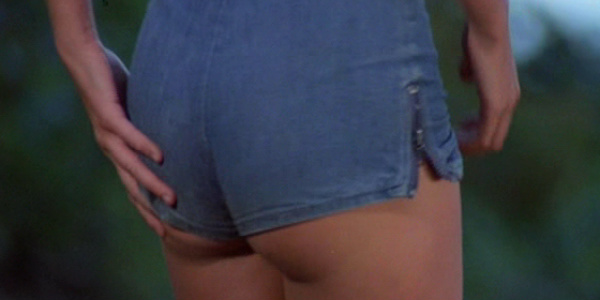
Masked killer who only bothered to cut out one eyehole!

Decapitated heads on a table!

On the other hand, maybe it all just comes down to the fact that I had zero expectations for Friday the 13th Part 2 and I was pleasantly surprised at its competent retelling of virtually the same story. Or I just thought Amy Steele was pretty badass with a pitchfork.

Final Thoughts:
If you’re going to watch Friday the 13th, go deep. Hit that series and keep on going. These are by no means my favorite movies or even my favorite slashers but I’m in this for the Hoop-tober haul. Bring on Part 3 as soon as it arrives from Netflix because — dare I say? — I really enjoyed #2.
30Hz Movie Rating:

Availability:
I watched the good old fashioned DVD sent to me in the mail by Netflix DVD. Nothing seemed more 80’s than going to a movie store and renting a battered VHS tape from a low rack in the horror section. But we don’t have that opportunity nowadays, do we? The bastards took all our fun. So I settled for movie-by-mail and it lacks the same je ne sais quoi.
.
2017 Cinema Shame/Hoop-Tober Watchpile Shame-a-thon
#1. Caltiki The Immortal Monster (1959) / #2. The Devil Doll (1936) / #3. The Velvet Vampire (1971) / #4. Mill of the Stone Women (1960) / #5. The Initiation (1984) / #6. Poltergeist (1982) / #7. Night of the Lepus (1972) / #8. The Black Cat (1934) / #9. The Raven (1935) / #10. Friday the 13th (1980) / #11. Friday the 13th Part 2 (1981) / #12. Body Snatcher (1945) / #13. Dismembered (1962) / #14. From Hell It Came (1957) / #15. Symptoms (1974)

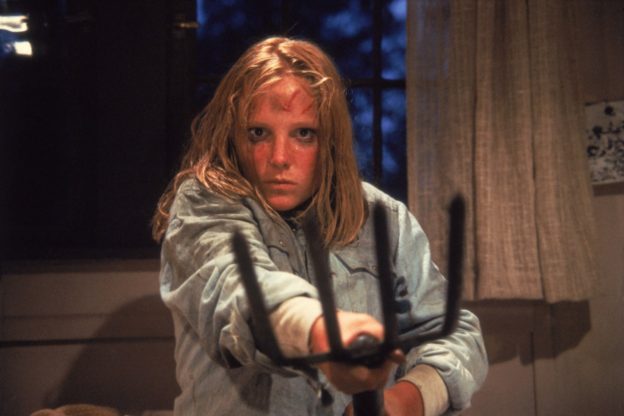
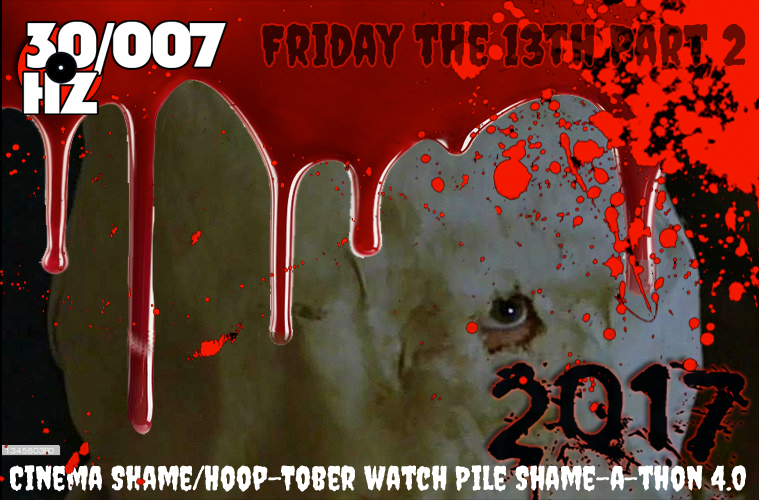


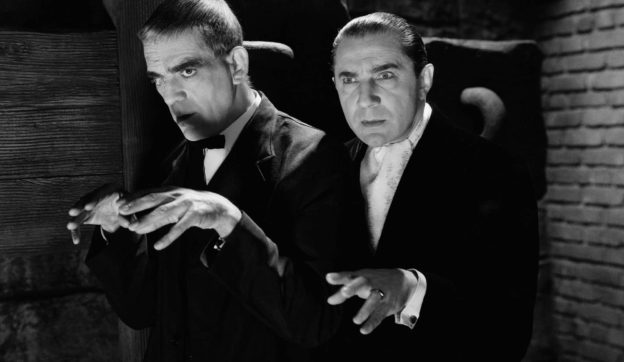

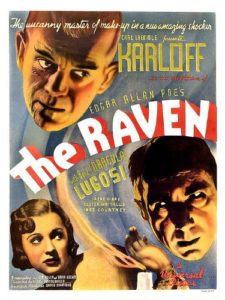 You could transcribe, pretty much verbatim, the introduction to my prior #31DaysofHorror review about
You could transcribe, pretty much verbatim, the introduction to my prior #31DaysofHorror review about 





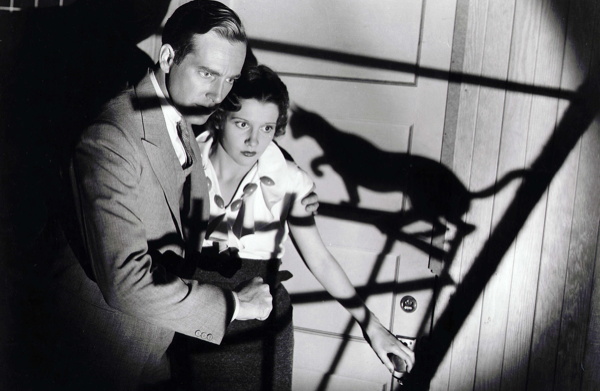
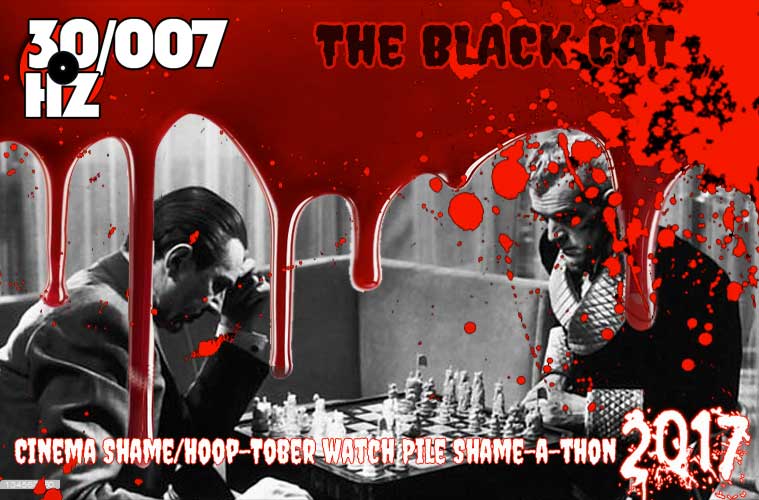
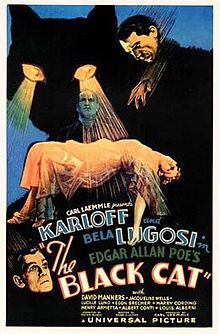 There’s a limitation to the kind of horror films I can watch while the wife goes to sleep. Silent are great. Gothic are good. Likewise for old Universals. “The bad” involve lots of screaming, slashing, and general gore.
There’s a limitation to the kind of horror films I can watch while the wife goes to sleep. Silent are great. Gothic are good. Likewise for old Universals. “The bad” involve lots of screaming, slashing, and general gore.